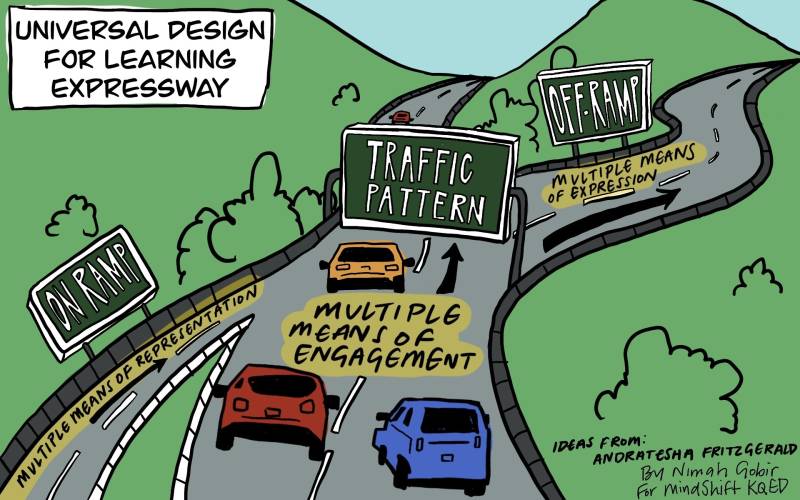When Kate Smith’s second grade class finished their virtual field trip to a local farm, her students chose how they wanted to share what they had learned. Some kids created postcards or a poster with crayons. Some wrote a letter about the trip and sent it to a family member. Others scripted commercials and shot a video to present to the class. Universal Design for Learning (UDL), an approach where teachers seek to make learning accessible to all students regardless of their backgrounds, abilities, or learning preferences, is at the root of Smith’s lessons. “You’re getting to know your kids — their abilities, their skill levels, what they struggle with, where they excel, their interests, all those kinds of things. And you’re designing [lessons] with kids in mind,” said the teacher, who works in Westminster, Maryland.
Developed by the Center for Applied Special Technology (CAST), UDL provides a framework for educators to create inclusive learning environments. “It really is about how we design instruction and recognizing that one-size-fits-all experiences, which have been perpetuated by the system forever, have been designed to exclude and oppress some learners,” said Katie Novak, author of UDL Now! A Teacher’s Guide to Applying Universal Design for Learning.
In UDL, teachers provide students with multiple representations of new information, multiple ways to engage with that information, and multiple avenues for expressing their learning. Andratesha Fritzgerald, an educator and author of Antiracism and Universal Design for Learning, said UDL can be likened to a learning expressway with multiple means of representation, engagement and expression serving as on-ramps, traffic patterns and off-ramps.
On-ramp: Multiple means of representation
When teachers provide multiple means of representation, they introduce information in a variety of ways. They may use visual aids, graphic organizers, videos and audio to make information easier for students to understand. “The information that students are supposed to be taking in or learning needs an on ramp,” said Fritzgerald. “It needs something to connect from where you are to where it is that you want to go.”


